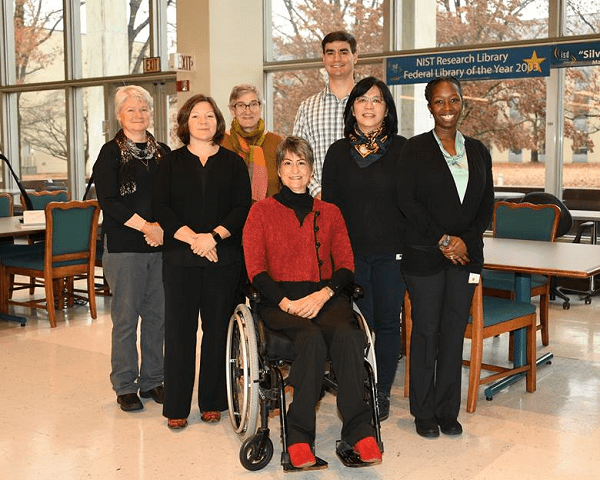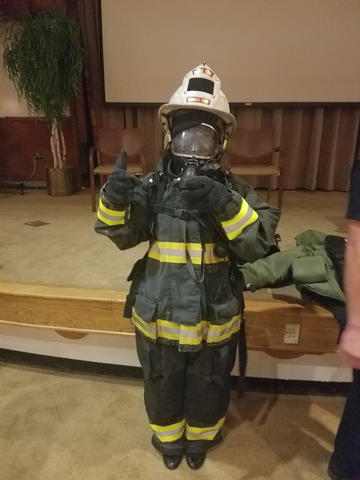
Research focuses on ensuring first responder communication tools are designed to meet users’ operational needs
Quality Digest PUBLISHED: THURSDAY, JANUARY 28, 2021 – 12:02
What do first responders do? It’s an easy question, and I used to think I knew the answer. Firefighters put out fires; police officers enforce the law; emergency medical system (EMS) workers treat injuries; 911 operators answer 911 calls and dispatch first responders to the scene. Simple, right?
I am a computer scientist at the National Institute of Standards and Technology (NIST) conducting research focused on human-centered computing and human-computer interaction. I have worked in the field for more than a decade, researching ways to help people with their real-world technology problems. My research, by nature, requires me to learn about different communities in order to assess their technological needs. For public safety, I thought I had a pretty decent grasp of the community. After all, what they do is woven into all our lives.
As it turns out, I was wrong. I had no idea what I was in for when I joined the NIST Public Safety Communications Research (PSCR) usability team. PSCR aims to drive research and development of communication technologies for first responders, including user interface and user experience research. This research specifically focuses on ensuring that first responder communication tools are designed to meet their users’ operational needs. Our team contributed to this portfolio by investigating the work of first responders to better understand those needs by examining their environments, the tasks they have to perform, and their communication needs. This way, we hoped to gain insight into how the usability of communication technologies can be measured and, ultimately, improved.
The usability team (left to right): Micky Steves, Kristen Greene, Sandra Spickard Prettyman (Culture Catalyst, LLC), Mary Theofanos, Kevin Mangold, Yee-Yin Choong, Shaneé Dawkins. Credit: NIST
What do they do? Everything.
Beginning in 2017, we interviewed nearly 200 first responders across the country, including 911 call takers and dispatchers, EMS personnel, firefighters, and law enforcement officers. In 2018 and into 2019, we sent out a nationwide online survey and received more than 7,000 responses from first responders across public safety. This resulted in a ton of data.
So, according to their responses, what do they do?
Anything and everything, really. People call 911 for anything from five-alarm fires to requests for help changing a light bulb, from cardiac arrests to paper cuts, and from bomb threats to petty disagreements. First responders are—as enumerated by one of our interviewees—“teachers, doctors, nurses, medics, moms, dads, coaches, counselors, mental health specialists, report takers, problem solvers, crime fighters.” They are like human Swiss Army knives. And yet, first responders often consider themselves public servants first and foremost. They spoke of their passion for and dedication to helping their communities.
It’s been an amazing opportunity to work on this project to further explore and understand how communication technology works—and does not work—for them in their environment. We found that first responders don’t feel like they need new “gadgets” to do their jobs effectively. They are open to new technology, but it needs to be usable, work seamlessly with the technology they already use, and be practical, fulfilling a specific purpose.
 |
Today’s tech, just better
But what first responders expressed far more than wanting new technology was for the communications devices they already had to work better—to be more reliable, more usable, and interoperable.
Imagine being a police officer responding to an active shooter scenario where several agencies are involved and not being able to communicate with the other responding units about your response plan.
Imagine being a firefighter trying to help someone stuck in a building, but you’re only getting static on the radio when trying to call for help.
Imagine you’re dispatching a paramedic to a rural location, and just as you’re about to give that paramedic a critical piece of information, the call is disconnected due to poor cellular service.
Imagine being an emergency medical technician (EMT) who always needs to do the same task before you can help a patient, but it requires 10 steps on your computer instead of one.
Or, imagine that none of those scenarios happen because your communication technology works exactly as it should. User interfaces and device interactions are simplified. Communication devices are interoperable, so different agencies can communicate even if they don’t have the same equipment. There are fewer dead zones and dropped calls. You can clearly hear what your fellow responder is saying on the radio. Imagine your technology doing what it should!
While the gaps in public safety communication technology are being filled with exciting, new innovations, the devices that first responders currently use have plenty of room for improvement.
First responders’ wish list
So, according to our findings, what did first responders say would be especially useful?
Several technologies that first responders want for their work already exist for consumers in the general public but are not used widely in public safety. Many first responders said that they would like to have a single login for their many applications to reduce the burden on the user having to remember different login and password information for each device or application they use. Another technology pervasive in our lives yet lacking in public safety is GPS mapping and navigation. First responders would rather use their own devices to assist with incident response than the outdated standard-issue computers in their response vehicles. On their personal phones they can access mapping, satellite views, street views, and other helpful applications like language translation. First responders think it would be hugely beneficial for services like these to be standard issue, as well as live images or a live video feed of the incident as it unfolds.
Emergency call takers and dispatchers said they would like to have automatic caller-location data when people call 911 via a mobile device.
EMS workers would like to have the ability to automatically transmit a patient’s vital information and other details to the hospital so that it is ready to receive the patient right when they come in the door.
Firefighters want to see the development of technologies like automatic vehicle location, which would let dispatchers know which fire engine is closest to the incident, not merely the closest station, allowing for faster response times. Firefighters also want augmented reality displays incorporated into equipment like their helmets, giving them information about things such as the temperature and oxygen levels.
Police officers said that they would benefit from having facial recognition software. They also want technology integrated into their vehicles using a display projected onto their windshield.
No matter the innovation, however, as long as first responders feel it will help them do their jobs better, and it is practical, reliable, easy to use, and works with the technology they already have, they will use it.
PSCR is working to address the communication technology problems and needs of first responders through its research and development efforts. But there is more work to be done.
This journey of understanding first responders better and amplifying their voices has been exciting. When I started, I did not fully understand the job of first responders and their responsibilities, but I am closer to understanding now. I’m excited for what our team will learn next.
ABOUT THE AUTHOR

Shaneé Dawkins
Shaneé Dawkins is a Computer Scientist in the Visualization and Usability Group at the National Institute of Standards and Technology (NIST). At NIST since 2012, Shaneé performs research focusing on human centered design and evaluation guidelines and standards. She is a part of the usable cybersecurity program, where she leads the phishing project. Shaneé also contributes to NIST’s public safety communication research (PSCR) efforts as a part of VUG’s PSCR usability team.
Shaneé received her M.S. and Ph.D. in Computer Science at Auburn University, where her research focused on human computer interaction and human centered design. She earned her B.S. in Computer Engineering at North Carolina A&T State University.
